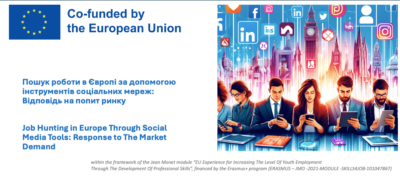In today’s digitally-driven world, job hunting has evolved far beyond traditional methods. The European job market, with its diverse opportunities and competitive landscape, has seen a significant shift towards using social media tools for job hunting. This article explores how social media has become a critical tool for job seekers in Europe and how it responds to the current market demand.
Social media platforms such as LinkedIn, Facebook, Twitter, and even Instagram have become integral in the job search process. These platforms offer unique advantages:
– Networking Opportunities: Social media allows job seekers to connect with professionals in their industry, attend virtual networking events, and participate in online discussions.
– Real-Time Job Listings: Companies frequently post job openings on their social media pages, allowing followers to get instant updates and apply immediately.
– Branding and Visibility: Job seekers can build their personal brand by showcasing their skills, experiences, and achievements through their profiles and posts.
LinkedIn: The Professional Network
LinkedIn remains the most prominent platform for professional networking and job hunting in Europe. It offers:
– Job Listings: Thousands of job listings are posted daily, filtered by industry, location, and experience level.
– Networking: LinkedIn facilitates direct connections with recruiters and industry leaders, enabling informational interviews and career advice.
– Skill Endorsements and Recommendations: Users can receive endorsements and recommendations from colleagues, which enhances their credibility.
Facebook and Twitter: Unconventional Job Search Tools
While LinkedIn is specifically designed for professional networking, Facebook and Twitter also play a significant role in job hunting:
– Facebook Groups: Numerous job-related groups allow users to share job postings, resume tips, and career advice.
– Company Pages: Following company pages on Facebook and Twitter can provide insights into company culture and instant notifications about job openings.
– Twitter Chats: Participating in industry-specific Twitter chats can help job seekers network and gain visibility among potential employers.
Instagram: The Visual Job Search
Instagram, primarily a visual platform, has also emerged as a job hunting tool:
– Personal Branding: Job seekers can use Instagram to create a professional portfolio showcasing their work, particularly useful for creative industries.
– Stories and Posts: Companies often use Instagram stories and posts to advertise job openings and company culture.
Responding to Market Demand
The shift to social media for job hunting in Europe aligns with the market’s demand for digital-savvy candidates who are proactive and well-networked. Employers seek candidates who are not only qualified but also demonstrate strong digital presence and networking capabilities.
Tips for Effective Job Hunting on Social Media
- Optimize Your Profiles: Ensure that your social media profiles are professional, complete, and up-to-date.
- Engage with Content: Like, comment, and share relevant content to increase your visibility and show your engagement in the industry.
- Join Groups and Participate in Discussions: Actively participating in groups and discussions can help you network and stay informed about job opportunities.
- Use Hashtags: Use relevant hashtags to increase the reach of your posts and connect with industry-specific content.
Conclusion
Job hunting in Europe through social media tools offers a dynamic and effective approach to finding employment. By leveraging the power of platforms like LinkedIn, Facebook, Twitter, and Instagram, job seekers can enhance their visibility, network with professionals, and stay ahead in the competitive job market. As the job market continues to evolve, staying digitally connected and proactive will be key to successful job hunting.
Funded by the European Union. Views and opinions expressed are however those of the author(s) only and do not necessarily reflect those of the European Union or the European Education and Culture Executive Agency (EACEA). Neither the European Union nor EACEA can be held responsible for them.
